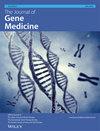Autophagy-related CMTM6 promotes glioblastoma progression by activating Wnt/β-catenin pathway and acts as an onco-immunological biomarker
Abstract
Background
Glioblastoma multiforme (GBM) is identified as one of the most prevalent and malignant brain tumors, characterized by poor treatment outcomes and a limited prognosis. CMTM6, a membrane protein, has been found to upregulate the expression of programmed cell death 1 ligand 1 protein (PD-L1) and acts as an immune checkpoint inhibitor by inhibiting the programmed death 1 protein/PD-L1 signaling pathway. Recent research has demonstrated a high expression of CMTM6 in GBM, suggesting its potential role in influencing the pathogenesis and progression of GBM, as well as its association with immune cell infiltration in the tumor microenvironment. However, the underlying mechanism of CMTM6 in GBM requires further investigation.
Methods
Data from cancer patients in The Cancer Genome Atlas, Gene Expression Omnibus and Chinese Glioma Genome Atlas cohorts were consolidated for the current study. Through multi-omics analysis, the study systematically examined the expression profile of CMTM6, epigenetic modifications, prognostic significance, biological functions, potential mechanisms of action and alterations in the immune microenvironment. Additionally, the study investigated CMTM6 expression in GBM cell lines and normal cells using reverse transcription PCR and western blot analysis. The impact of CMTM6 on GBM cell proliferation, migration and invasion was evaluated using a combination of cell counting kit-8 assay, clone formation assay, 5-ethynyl-2′-deoxyuridine incorporation assay, wound healing assay and Transwell assay. In order to explore the mechanism of CMTM6, the Wnt/β-catenin signaling pathway and autophagy-related genes were further verified through western blot analysis.
Results
CMTM6 is highly expressed in multiple tumors, particularly GBM. CMTM6 has been shown to be a valuable diagnostic and prognostic biomarker by various bioinformatics approaches. Additionally, CMTM6 plays a pivotal role in the pathogenesis of cancer, specifically GBM, by modulating various biological processes such as DNA methyltransferase expression, RNA modification, copy number variation, genomic heterogeneity, tumor stemness and DNA methylation. The findings of the experiment indicate a significant correlation between elevated CMTM6 expression and the proliferation, invasion, migration and autophagy of GBM cells, with potential key roles mediated through the Wnt/β-catenin signaling pathway. Furthermore, CMTM6 is implicated in modulating tumor immune cell infiltration and is closely linked to the expression of various immune checkpoint inhibitors and immune modulators, particularly within the context of GBM. High levels of CMTM6 expression also enhance the responsiveness of GBM patients to radiotherapy and chemotherapy, thereby offering valuable insights for guiding treatment strategies for GBM.
Conclusions
Autophagy-related CMTM6 is highly expressed in various types of cancer, especially GBM, and it can regulate GBM progression through the Wnt/β-catenin signaling pathway and is capable of being used as an underlying target for the diagnosis, treatment selection and prognosis of patients with GBM.

 求助内容:
求助内容: 应助结果提醒方式:
应助结果提醒方式:


